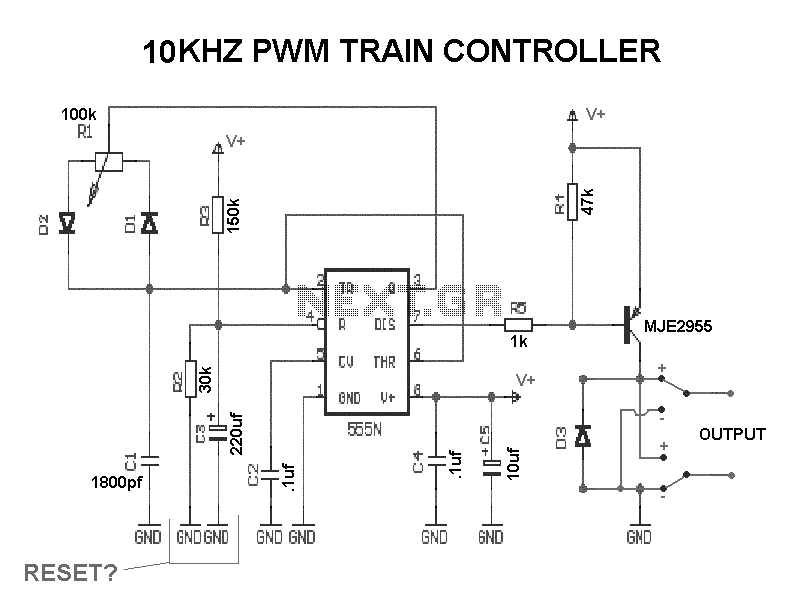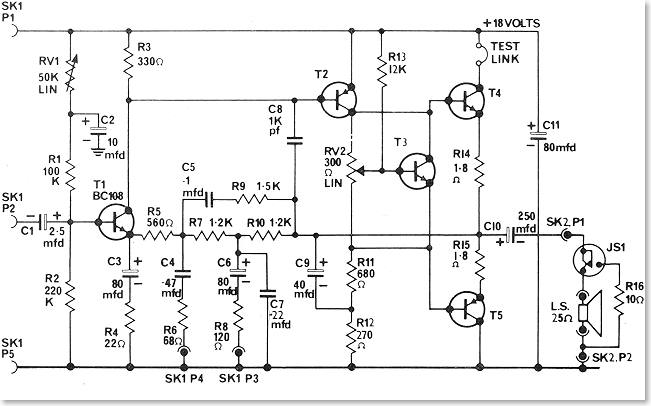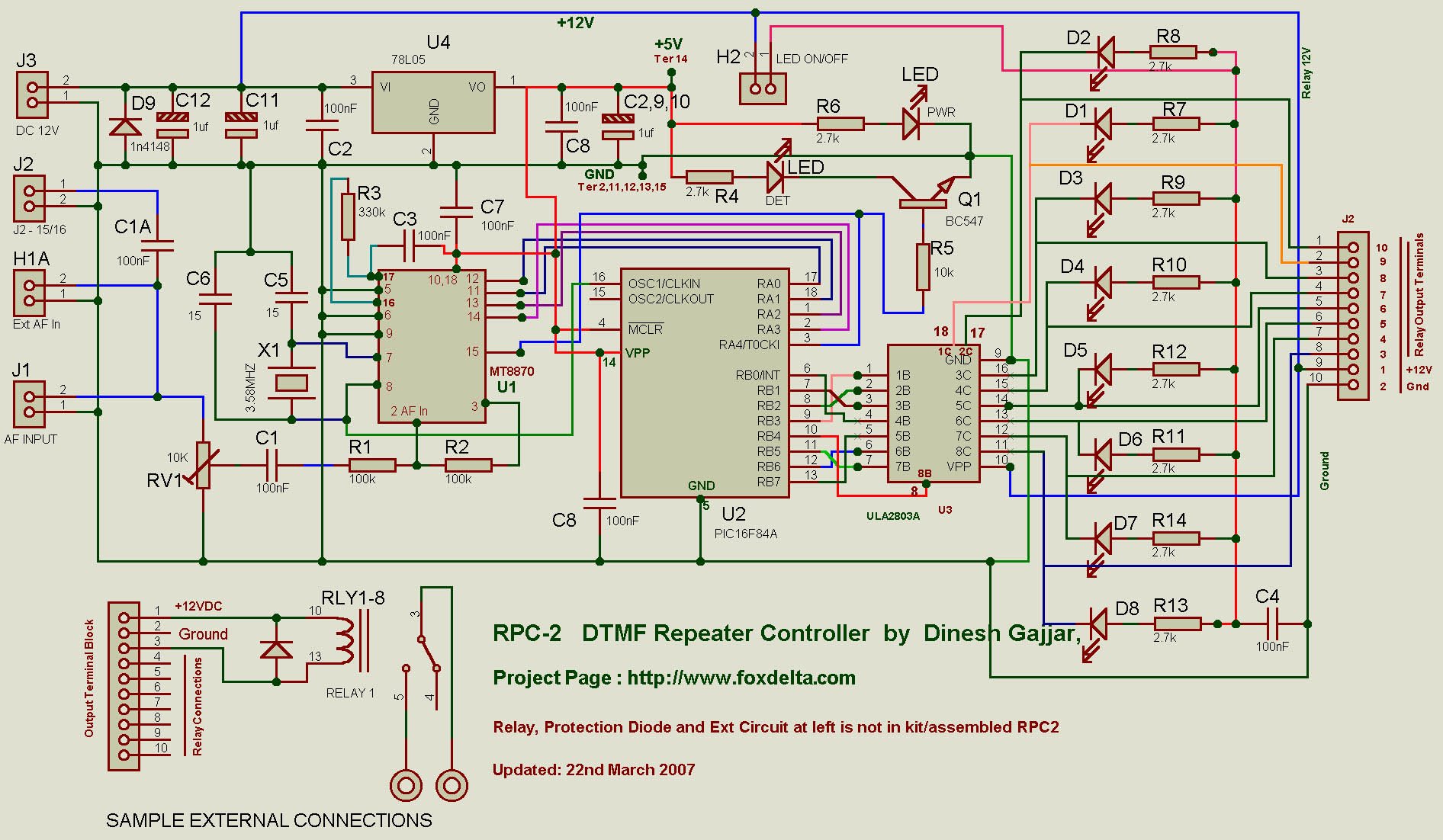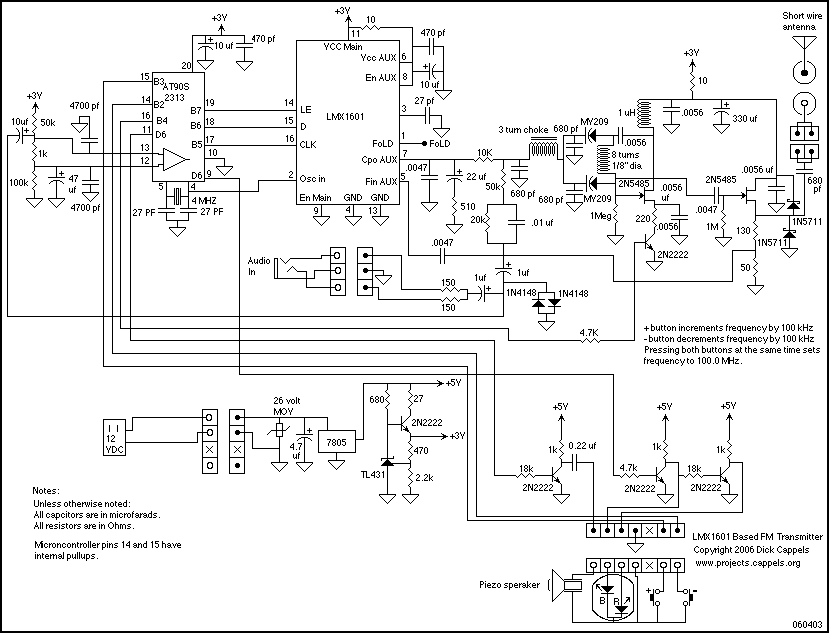
Hidden Radio Transmitter Controller
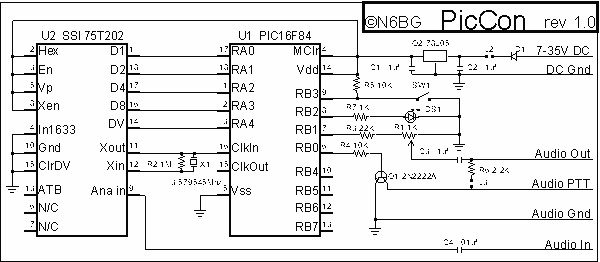
PicCon is a PIC microcontroller based radio controller designed for hidden transmitter hunting. When combined with a radio transmitter, it will produce tone sequences and Morse code messages at user-programmed times. It is completely field programmable via DTMF tones, utilizes EEPROM for all programmed options so they are remembered when power is removed, and is quite compact.
The PicCon radio controller employs a PIC microcontroller, which serves as the core processing unit for generating audio signals and Morse code. This microcontroller is programmed to output specific tone sequences at designated intervals, allowing users to effectively communicate or signal during transmitter hunting operations. The integration of a radio transmitter enhances the functionality of the PicCon, enabling it to broadcast these signals over a distance.
Field programmability is a key feature of the PicCon, allowing users to modify settings and parameters directly in the field using DTMF (Dual-Tone Multi-Frequency) tones. This capability is particularly advantageous for operators who may need to adjust their settings without the need for a computer or additional programming equipment. The DTMF tones are recognized by the microcontroller, which interprets them to change configurations such as tone frequencies, message content, and timing sequences.
To ensure that all programmed options are retained even when the device is powered off, the PicCon utilizes EEPROM (Electrically Erasable Programmable Read-Only Memory). This non-volatile memory stores the configuration data, making it possible to resume operations without loss of information after power interruptions.
The compact design of the PicCon contributes to its portability, making it suitable for outdoor use in various environments. The overall architecture of the circuit includes essential components such as the PIC microcontroller, an audio output stage, a power supply circuit, and the necessary input interfaces for DTMF tone detection. Proper circuit layout and component selection are crucial for minimizing noise and ensuring reliable operation during field activities.PicCon is a PIC microcontroller based radio controller designed for hidden transmitter hunting. When combined with a radio transmitter, it will produce tone sequences and Morse code messages at user-programmed times. It is completely field programmable via DTMF tones, utilizes EEPROM for all programmed options so they are remembered when power is removed, and is quite compact.
🔗 External reference
The PicCon radio controller employs a PIC microcontroller, which serves as the core processing unit for generating audio signals and Morse code. This microcontroller is programmed to output specific tone sequences at designated intervals, allowing users to effectively communicate or signal during transmitter hunting operations. The integration of a radio transmitter enhances the functionality of the PicCon, enabling it to broadcast these signals over a distance.
Field programmability is a key feature of the PicCon, allowing users to modify settings and parameters directly in the field using DTMF (Dual-Tone Multi-Frequency) tones. This capability is particularly advantageous for operators who may need to adjust their settings without the need for a computer or additional programming equipment. The DTMF tones are recognized by the microcontroller, which interprets them to change configurations such as tone frequencies, message content, and timing sequences.
To ensure that all programmed options are retained even when the device is powered off, the PicCon utilizes EEPROM (Electrically Erasable Programmable Read-Only Memory). This non-volatile memory stores the configuration data, making it possible to resume operations without loss of information after power interruptions.
The compact design of the PicCon contributes to its portability, making it suitable for outdoor use in various environments. The overall architecture of the circuit includes essential components such as the PIC microcontroller, an audio output stage, a power supply circuit, and the necessary input interfaces for DTMF tone detection. Proper circuit layout and component selection are crucial for minimizing noise and ensuring reliable operation during field activities.PicCon is a PIC microcontroller based radio controller designed for hidden transmitter hunting. When combined with a radio transmitter, it will produce tone sequences and Morse code messages at user-programmed times. It is completely field programmable via DTMF tones, utilizes EEPROM for all programmed options so they are remembered when power is removed, and is quite compact.
🔗 External reference

